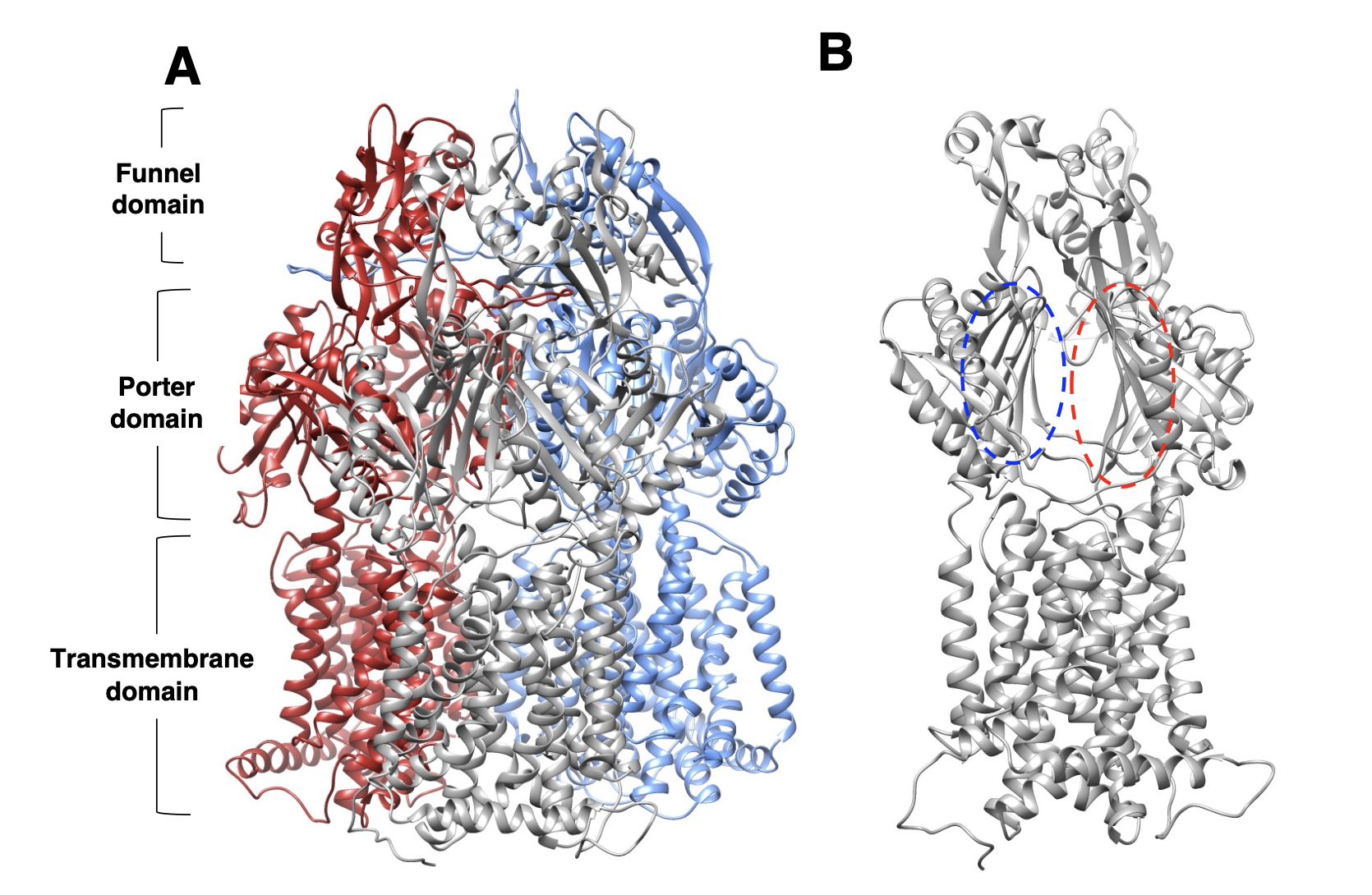Antibiotic resistant bacteria pose a growing threat, potentially leaving doctors without effective treatments for many common infections. One way to stave off that future is to find new antibiotics — but it’s also possible that the right treatment could short-circuit resistance to make old antibiotics effective again. In a paper published recently in the journal Pathogens, CSUN microbiologists report on a method to do just that.
Master’s alumna, and now Biology lecturer, Allea Cauilan and her thesis mentor, Associate Professor of Biology Cristian Ruiz Rueda, examined how sodium malonate can restore the effectiveness of antibiotics against bacteria carrying a particular “multidrug efflux pump” — a molecular structure in the cell membrane that expels substances, like antibiotics, that could harm the cell.
The AcrAB-TolC pump facilitates drug resistance in bacteria related to E. coli, but most molecules known to interfere with its activity are too toxic to use in human patients with bacterial infections. Prior work by Cauilan, Ruiz Rueda, and other members of the lab suggested that nontoxic sodium malonate might interfere with AcrAB-TolC. So they tested whether sodium malonate could improve the efficacy of a series of antimicrobial agents against antibiotic resistant E. coli. They found that sodium malonate did indeed cause E. coli cells to accumulate ethidium bromide, which is usually pumped out by AcrAB-TolC; and it decreased the quantity of three different antibiotics necessary to inhibit E. coli growth.
Cauilan and Ruiz Rueda conclude that sodium malonate has good potential as an “adjuvant”, applied alongside existing antibiotics to extend their effectiveness against otherwise drug-resistant bacteria. The full paper is available open access on the journal website.
Image: Structure of the AcrB element of AcrAB-ToIC, and a single AcrB monomer with binding pockets highlighted (detail from Cauilan and Ruiz Rueda 2022, Figure 4).

